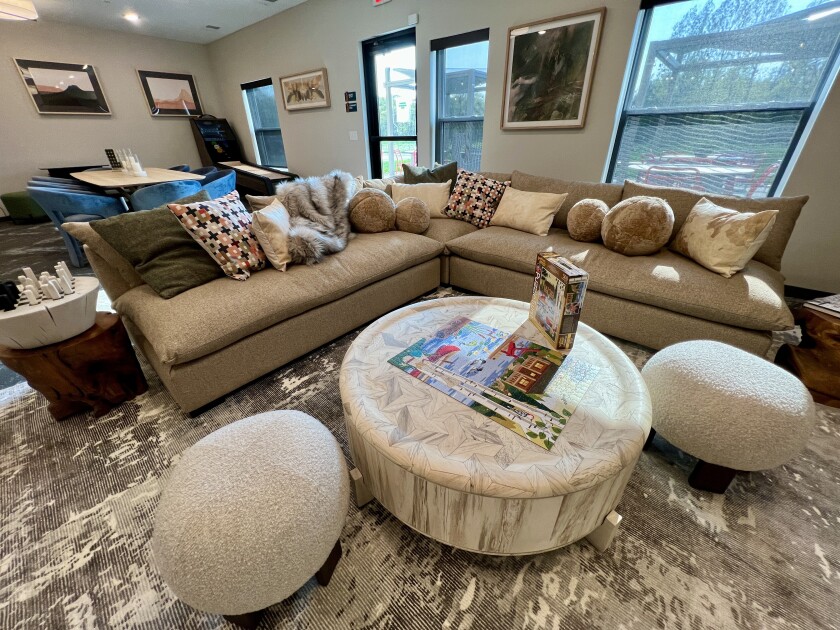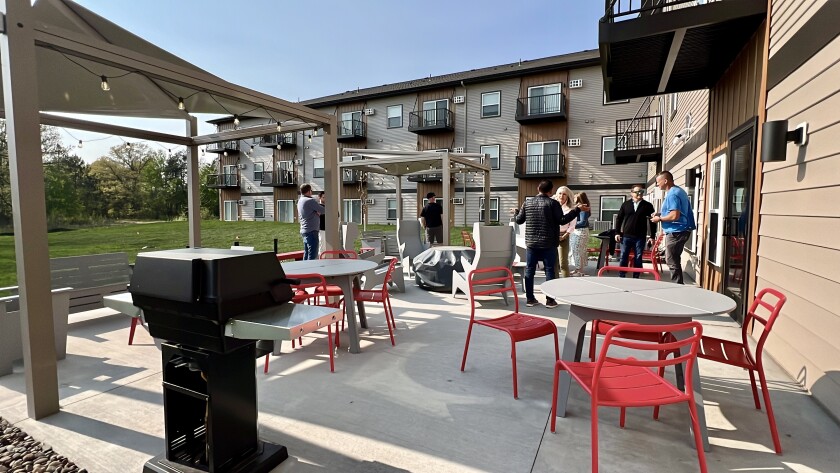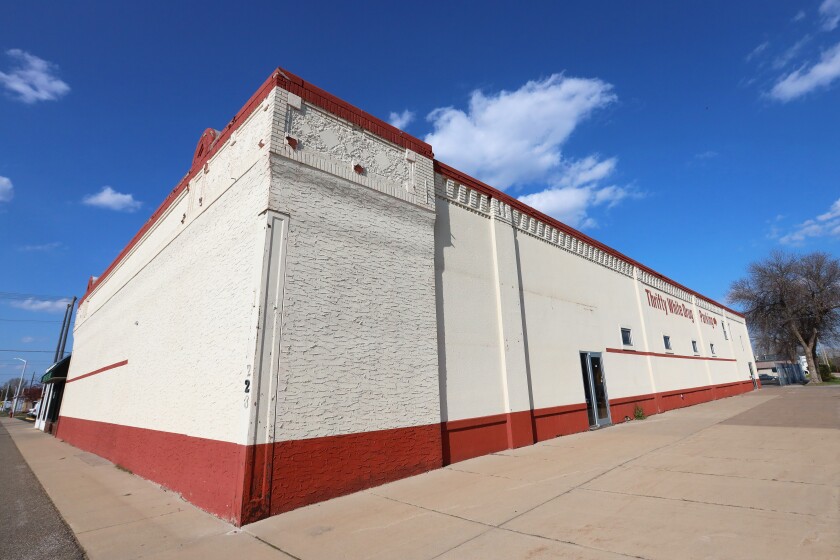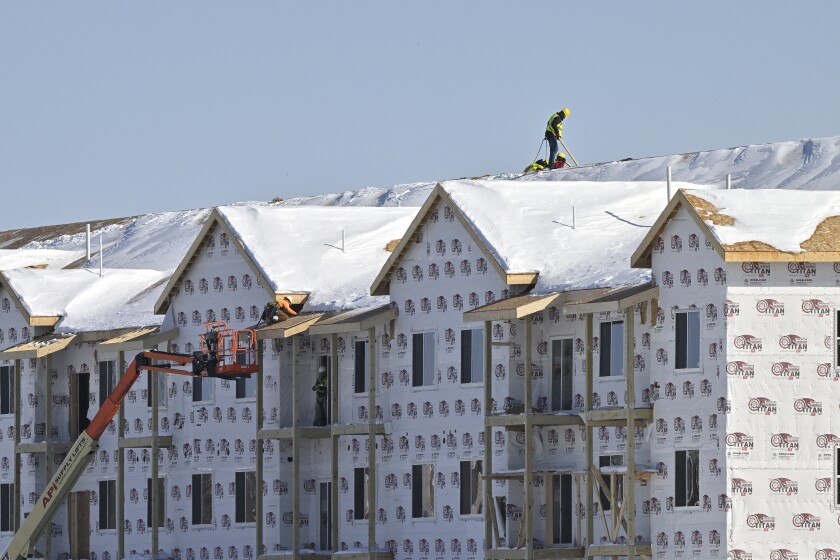
BRAINERD — Ten counties in the state are projected for significant population growth and almost all are in metro areas, but one stands out in Greater Minnesota — Crow Wing County.
The Minnesota State Demographic Center projects the state to grow from 5.78 million in 2024 to 6.11 million in 2075. Along with Crow Wing County, the counties expected to have the most notable population increases are in or around the Twin Cities metro area — Dakota, Washington, Anoka, Wright, Scott, Carver, Sherburne and Isanti counties. The other outlier, Olmsted County, is the home of the Rochester metropolitan area.
Crow Wing County stands out as the only county without a metro area expansion with an expected 18,278 people added to the county. The U.S. Census data from 2020, listed the county’s population at 66,124.
 Crow Wing County stands out as the only county without a metro area expansion with an expected 18,278 people added to the county. The U.S. Census data from 2020, listed the county’s population at 66,124. The Minnesota State Demographic Center’s projects 10 counties in the state will experience significant population growth.
Crow Wing County stands out as the only county without a metro area expansion with an expected 18,278 people added to the county. The U.S. Census data from 2020, listed the county’s population at 66,124. The Minnesota State Demographic Center’s projects 10 counties in the state will experience significant population growth.
Contributed / Map from Minnesota Legislature
The natural resources with abundant water, forests, habitat and quality of life along with amenities of health care, shopping and arts are all here.
“Sometimes having an outsider’s perspective is really helpful for me,” said Chris Close, senior adviser and owner at Close Converse in Brainerd. “We are seeing way more people from across the country recognizing it. And it’s like growth begets growth. And it feels like we’re at the tipping point.”
Close referenced the Malcolm Gladwell book, “The Tipping Point,” that notes small changes can have a big impact and when a trend grows to become something bigger with more dramatic change like growth spurring more growth.
Close and Nate Grotzke, broker at Close Converse Commercial Real Estate/Business Brokerage, have monitored business trends across the lakes area for decades. Close Converse was established in 1995 and represents clients across a variety of industries in selling, buying, leasing properties in retail, office and industrial uses as well as investments in real estate. The company notes its work team represents more than 100 years of combined experience in the field. Their signs marketing properties are ubiquitous across the lakes region.
Grotzke, who has also been instrumental in the Brainerd Destination Downtown business contests, joined Close Converse in 2007, working with leasing and sales in office spaces and retail and more. Close joined the business in 2002 and specializes in business brokerage and investment properties.
Close pointed to the development this year of The Lofts on Novotny in Baxter.
 The Lofts at Novotny are just off Novotny Road and a short distance from Highway 371 North in Baxter.
The Lofts at Novotny are just off Novotny Road and a short distance from Highway 371 North in Baxter.
Renee Richardson / Brainerd Dispatch
“When Corner Lot began to consider development opportunities outside of Florida, Central Minnesota was one of the first places we looked,” said Andy Allen, Corner Lot CEO, in a news release when the The Lofts on Novotny project was announced. “That part of the country is near and dear to my family, and we spend a large part of our summers in the region. People are drawn to a lifestyle of outdoor activities, and Crow Wing County has so much to offer.”
 The commons area at The Lofts at Novotny.
The commons area at The Lofts at Novotny.
Renee Richardson / Brainerd Dispatch
Close said Allen lived in Jacksonville, Florida, all his life.
“As someone that grew up in Florida, south Florida, saw Jacksonville boom, he looks at this and says, ‘This is just like Jacksonville,” Close said of a lunch conversation the two had. Close countered the Brainerd lakes area was so much smaller. Allen concurred but said the culture, the growth, everything was so much like Jacksonville.
“He’s very, very bullish on the area,” Close said of Allen’s positive outlook on central Minnesota, leading to his thoughts on the benefits of an outsider’s perspective.
 A view of the back patio at The Lofts on Novotny.
A view of the back patio at The Lofts on Novotny.
Renee Richardson / Brainerd Dispatch
The Lofts on Novotny represented the Florida group’s first development outside of Florida. The 64-unit, three-story apartment building was quickly filled with renters in what developers describe as apartment homes. There are plans to build a second apartment building in Pequot Lakes.
Strong market and changing mindset
In terms of office, commercial and industrial vacancies, Close said the area has a healthy supply with not too little and definitely not too much. Five years ago there were a lot of vacancies.
“We’re a strong market,” Close said, noting it’s finding the right person to fit the open space.
Kwik Trip is building in Baxter. Close said a new Veterans Administration clinic will be here in the next three years.
“We went for a long period of time with very little new construction,” Grotzke said. “So what was happening is buyers and tenants were choosing to take existing space and make it work or just not doing stuff because they weren’t building. Some of it was the uncertainty. Some of it was the cost. Interest rates have not come down significantly.”
And it’s like growth begets growth. And it feels like we’re at the tipping point.
Chris Close
While some costs like lumber did go down, labor went up, Grotzke said. But there are more people now looking to potentially build. He said in the past when people outgrew their location, if they owned it they sold it and built something somewhere else. If they rented, they moved out. But recently that wasn’t happening and landlords weren’t building many multi-tenant buildings.
Multi-tenant buildings along Highway 371 in Baxter are about $30 per square foot plus other things a business needs to add on such as operating expenses, taxes, insurance, maintenance and utilities. So businesses could pay that or lease existing space for $12 a square foot per year. National tenants were able to move into spaces where a local tenant, who might be able to afford $8 to $14 per square foot but not $35 a square foot, just didn’t build and instead tried to find a place that would work.
“In the past, we’d have retail centers with quite a few vacancies,” Grotzke said. “Now it’s one here, one here, one here, one over here. … People are buying existing stuff just because they can’t afford to build. And so that’s helped push up sale prices.”
Close noted two things also changed mindsets. He pointed to the murder of George Floyd in 2020 in Minneapolis, which prompted protests and riots across the country, and the pandemic. The New York Times reported protests erupted in at least 140 cities across the nation. The COVID-19 pandemic was officially declared in March of 2020.
Close said those events shifted people’s mindsets to opportunities to move to a lot of beautiful places and smaller communities they could be part of with technology and remote work. People may have thought about those moves before, but those events may have pushed them to actually do it, Close said. Being able to own 10 acres in the Brainerd lakes area or be on a lake for less money than a metro area, and still have the amenities and technology, made it attractive and suddenly more possible.
“I think there’s been a real migration, not just to Brainerd but to others of those that were originally vacation destinations,” Close said. “It’s like, ‘This actually could be a full-time destination.’ And I think that’s what’s happening.”
What will peak baby boomer retirement bring?
In addition, Close noted the baby boomer generation, which Forbes reported is now retiring by more than 10,000 a day or 4 million a year, expected to retire to lake places and make them their permanent home. Baby boomer retirement is expected to peak this year with the greatest surge of Americans turning 65, the Alliance for Lifetime Income reported.
While there were previous demographic projections for the Brainerd lakes area to grow considerably, some of those predictions were slowed by the Great Recession and the housing bubble mortgage crisis of 2008.
This recent growth and the predictions for the future are different than the past, Close said.
“I’ve been doing this since 2002, so 22 years, and I’ve never and my dad, who’s lived here all his life, we’ve never seen — and we can’t like grab actual necessarily statistical data and everything — but just from the pulse and what you hear and what we see on the street, has been the most momentum we’ve seen. It’s pretty impressive. And we’re hearing it from other outsiders, other developers that are very bullish on this area.”
There are challenges ahead with years of highway and road construction in the near future as Highway 210 is reconstructed or repaved and the overpass is built on Highway 371.

Jim Stafford / Brainerd Dispatch file photo
“That’s going to change the landscape, it is,” Grotzke said. “And it’s not set in stone to our understanding, it’s not set in stone exactly how it’s going to look.”
Another challenge continues to be affordable housing.
“Many communities are offering incentives for housing development to happen within their community, because a lot of other communities are facing the same thing that we are here in the Brainerd lakes area,” Grotzke said.
Larger housing developers look at Minnesota and try to figure out the communities where it makes the most financial sense to build, Grotzke said, and are finding more options elsewhere.
While those housing developers are saying they’d like to build 30-40-50 house developments, they find the cost of infrastructure is too high, Grotzke said. He pointed to a recent 30-house developer who said they just couldn’t make the numbers work after looking at costs for roads and other infrastructure.
Costs come in sewer and water availability charges and for apartment buildings, they can pose a real barrier, Close said, as the commonly called SAC and WAC fees are one-time costs charged for each unit. The money goes to the cities to help them pay for wastewater and water treatment pipes and plants and maintain those systems.
In Brainerd, the SAC fees are $1,900 and WAC fees are $1,400 or $3,300 per single home or per unit in a multi-family structure. In Baxter, WAC fees are $2,800 for new residential construction and SAC charges are $3,000, for a combined $5,800.
“Right now, there aren’t as many financial packages offered to developers, as in other communities, so the developers that are developing here, while there are some benefits to it, or financial benefits or assistance from the community, there’s a lot of other communities that are pushing out a lot more money than what we are to get these developers,” Grotzke said. “… I’ve worked with some developers recently that just said the numbers don’t make sense.”
There are projects under development that will be able to make a dent in housing needs, including the redevelopment of the former Thrifty White location into a 78-unit apartment complex in downtown Brainerd.
 An apartment complex will be built at the site of the old Thrifty White building at 805 Laurel Street, seen here Wednesday, April 24, 2024, in Brainerd.
An apartment complex will be built at the site of the old Thrifty White building at 805 Laurel Street, seen here Wednesday, April 24, 2024, in Brainerd.
Kelly Humphrey / Brainerd Dispatch
Dubbed Eight05 Laurel, the new four-story building will include 12 studio apartments; 28 one-bedroom units; nine one-bedroom apartments with a den; 15 two-bedroom, one-bathroom units; and 14 two-bedroom, two-bathroom apartments. Per Americans with Disabilities Act standards, there will be one handicapped accessible unit.
The main level will house five rental spaces, along with an office, community room with kitchenette, work spaces and unisex bathrooms.
There will be 65 underground heated parking stalls, 26 surface stalls, an elevator and secure entry to the building. The city of Brainerd waived the SAC and WAC fees, which amounted to $257,400, for the apartment project.
“That’ll be a great one,” Grotzke said of the Brainerd redevelopment project for housing. The project will reinvigorate an empty building in downtown Brainerd and bring residents within walking distance of retail, restaurants and groceries.
In Baxter, Campbell Properties’ Pinehurst Apartments set up a five-year plan in 2022 to construct five 50-plus unit apartment buildings off Cypress Drive and Douglas Fir Drive. All told the development is constructing 289 residential units when the project is completed in 2026.
 Construction personnel work on the Pinehurst three-story apartment buildings between Douglas Fir and Berrywood Drives in Baxter on Tuesday, March 14, 2023, south of Hinckley Road. The three buildings will have 57 units each in the plans and two will have 59 units each. The development would include 289 residential units with attached multi-stall garage buildings with plans for a 5, 166-square-foot clubhouse building. Campbell Properties is planning on utilizing a five-year phasing plan to complete the development.
Construction personnel work on the Pinehurst three-story apartment buildings between Douglas Fir and Berrywood Drives in Baxter on Tuesday, March 14, 2023, south of Hinckley Road. The three buildings will have 57 units each in the plans and two will have 59 units each. The development would include 289 residential units with attached multi-stall garage buildings with plans for a 5, 166-square-foot clubhouse building. Campbell Properties is planning on utilizing a five-year phasing plan to complete the development.
Steve Kohls / Brainerd Dispatch
“Our vacancy rate, it’s been zero percent for five years,” David Campbell, a representative from Campbell Properties, said at a Baxter City Council meeting in 2022. “We have nothing available ever. So we decided (Baxter would) be a great spot to build.”
If more builders find they can fill a niche for housing that sells quickly, the lakes area may see more patio homes or garden homes. Garden homes offer a private front and backyard providing room for landscaping, greenspace or gardening but still on a small lot with a smaller, more easily maintained single-family home and main-level master suite.
Garden homes provide an option to downsize or embrace a starter home with enough square footage to be comfortable while retaining a smaller footprint and private outdoor space that retains greenery. In some cases a garden home, which typically includes a second-floor room for guests or a young family, can share one wall with a neighbor’s home. As homes that are designed to fit into the environment, garden homes may be something that work well in the lakes area and fill an existing demand.
Minnesota State Demographic Center projections
May 2024
About the data: projections rely heavily on assumptions about future demographic behaviors based on historical trends.
Crow Wing County Census data
By the numbers
- $66,568 — median household income, compared to the state median of $82,338.
- 66,123 — total population with 61,586 White, 2,712 with two or more races, 912 Hispanic or Latino, 663 American Indian/Alaska Native, 332 Asian, 392 some other race, 419 Black or African American, 19 Native Hawaiian or other Pacific Islander.
- 41,568 — number of housing units in the county.
- 28,475 — total households.
- 2,227 — number of employers.
- $861 — median gross rent compared to $1,200 in the state.
- 81.2% — percent of homeownership
- 73.7% — school enrolled population in kindergarten to 12th grade.
- 64.5% — percentage of workers employed at a private company.
- 45.6 — median age. The median age in Minnesota is 39.
- 32.6% — have a bachelor’s degree or higher compared to 39.1% in the state.
- 25.1 minutes — average travel time to work. State average was 22.8 minutes. And 75% of workers aged 16 and older drive to work alone.
- 24.6% — population percentage age 65 and older. In Minnesota, the population 65 and older is 17.4%
- 11.3% — population living in poverty, compared to a state total of 9.6%.
- 8.3% — percentage of population who are veterans, compared to 6% in the state.
- 36.3% of ancestry is German, followed by 15.2% Norwegian, 11.2% Irish, 7.2% English, 5.9% Polish, 4.6% French, 2.4% Italian, 1.6% Scottish, 0.1% Subsaharan Africa.
Note: Data from U.S. Census 2020 and 2022 American Community Survey one-year estimates.
Renee Richardson, managing editor, may be reached at 218-855-5852 or renee.richardson@brainerddispatch.com. Follow on Twitter at www.twitter.com/DispatchBizBuzz.




